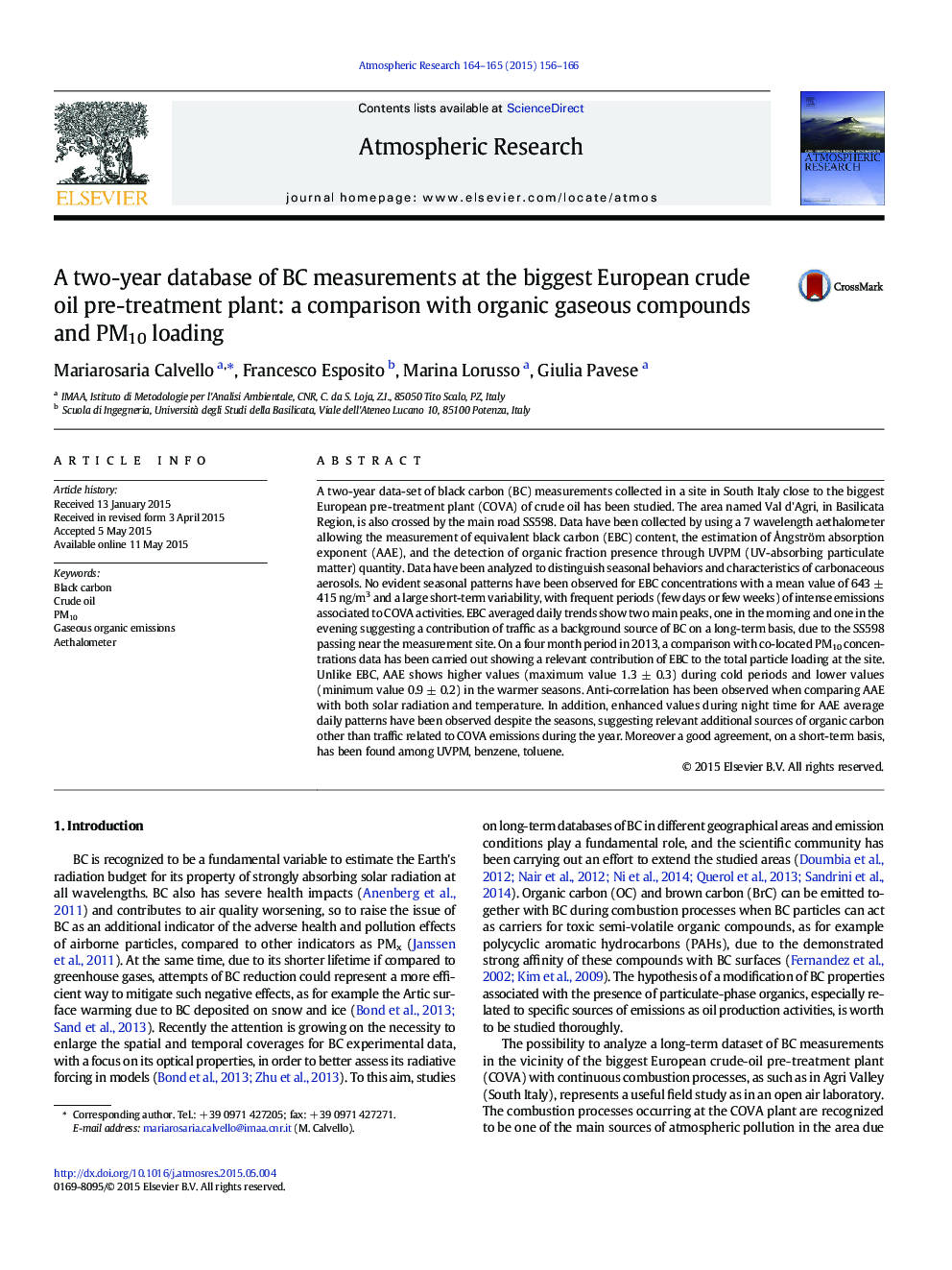| Article ID | Journal | Published Year | Pages | File Type |
|---|---|---|---|---|
| 6343208 | Atmospheric Research | 2015 | 11 Pages |
â¢First long-term EBC dataset at the biggest European crude oil pre-treatment plantâ¢EBC mainly from industrial emissions plus a background contribution from trafficâ¢High percent contribution of EBC to PM10 loadingâ¢Presence of an organic fraction disjoined from traffic-originated EBCâ¢Agreement among the particulate organic fraction and some gaseous compounds
A two-year data-set of black carbon (BC) measurements collected in a site in South Italy close to the biggest European pre-treatment plant (COVA) of crude oil has been studied. The area named Val d'Agri, in Basilicata Region, is also crossed by the main road SS598. Data have been collected by using a 7 wavelength aethalometer allowing the measurement of equivalent black carbon (EBC) content, the estimation of à ngström absorption exponent (AAE), and the detection of organic fraction presence through UVPM (UV-absorbing particulate matter) quantity. Data have been analyzed to distinguish seasonal behaviors and characteristics of carbonaceous aerosols. No evident seasonal patterns have been observed for EBC concentrations with a mean value of 643 ± 415 ng/m3 and a large short-term variability, with frequent periods (few days or few weeks) of intense emissions associated to COVA activities. EBC averaged daily trends show two main peaks, one in the morning and one in the evening suggesting a contribution of traffic as a background source of BC on a long-term basis, due to the SS598 passing near the measurement site. On a four month period in 2013, a comparison with co-located PM10 concentrations data has been carried out showing a relevant contribution of EBC to the total particle loading at the site. Unlike EBC, AAE shows higher values (maximum value 1.3 ± 0.3) during cold periods and lower values (minimum value 0.9 ± 0.2) in the warmer seasons. Anti-correlation has been observed when comparing AAE with both solar radiation and temperature. In addition, enhanced values during night time for AAE average daily patterns have been observed despite the seasons, suggesting relevant additional sources of organic carbon other than traffic related to COVA emissions during the year. Moreover a good agreement, on a short-term basis, has been found among UVPM, benzene, toluene.
